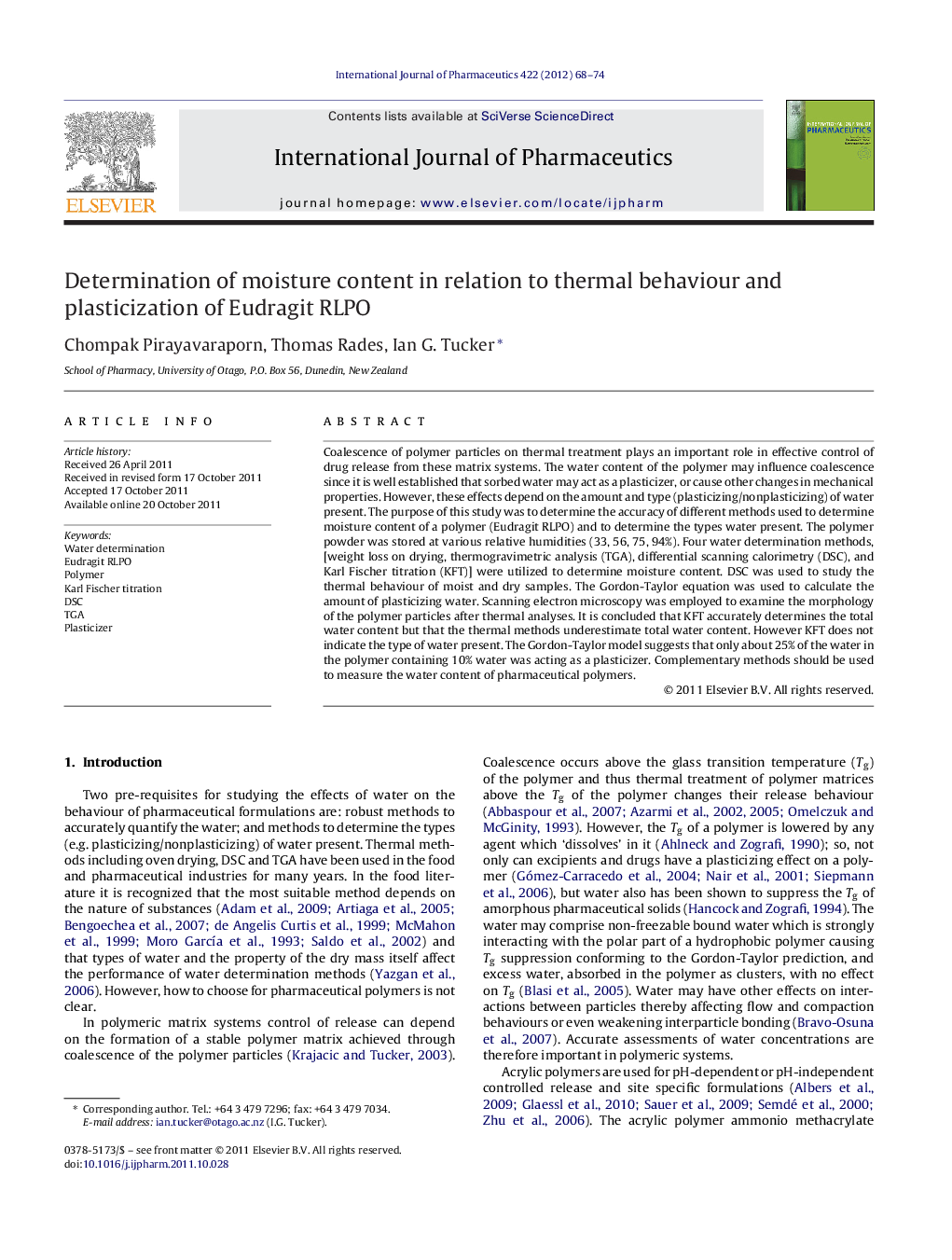| Article ID | Journal | Published Year | Pages | File Type |
|---|---|---|---|---|
| 2503085 | International Journal of Pharmaceutics | 2012 | 7 Pages |
Coalescence of polymer particles on thermal treatment plays an important role in effective control of drug release from these matrix systems. The water content of the polymer may influence coalescence since it is well established that sorbed water may act as a plasticizer, or cause other changes in mechanical properties. However, these effects depend on the amount and type (plasticizing/nonplasticizing) of water present. The purpose of this study was to determine the accuracy of different methods used to determine moisture content of a polymer (Eudragit RLPO) and to determine the types water present. The polymer powder was stored at various relative humidities (33, 56, 75, 94%). Four water determination methods, [weight loss on drying, thermogravimetric analysis (TGA), differential scanning calorimetry (DSC), and Karl Fischer titration (KFT)] were utilized to determine moisture content. DSC was used to study the thermal behaviour of moist and dry samples. The Gordon-Taylor equation was used to calculate the amount of plasticizing water. Scanning electron microscopy was employed to examine the morphology of the polymer particles after thermal analyses. It is concluded that KFT accurately determines the total water content but that the thermal methods underestimate total water content. However KFT does not indicate the type of water present. The Gordon-Taylor model suggests that only about 25% of the water in the polymer containing 10% water was acting as a plasticizer. Complementary methods should be used to measure the water content of pharmaceutical polymers.
Graphical abstractFigure optionsDownload full-size imageDownload as PowerPoint slide
